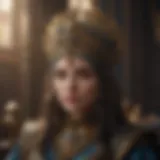Exploring the History and Art of Vintage Tarot Cards
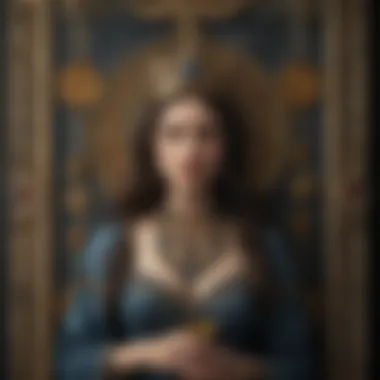
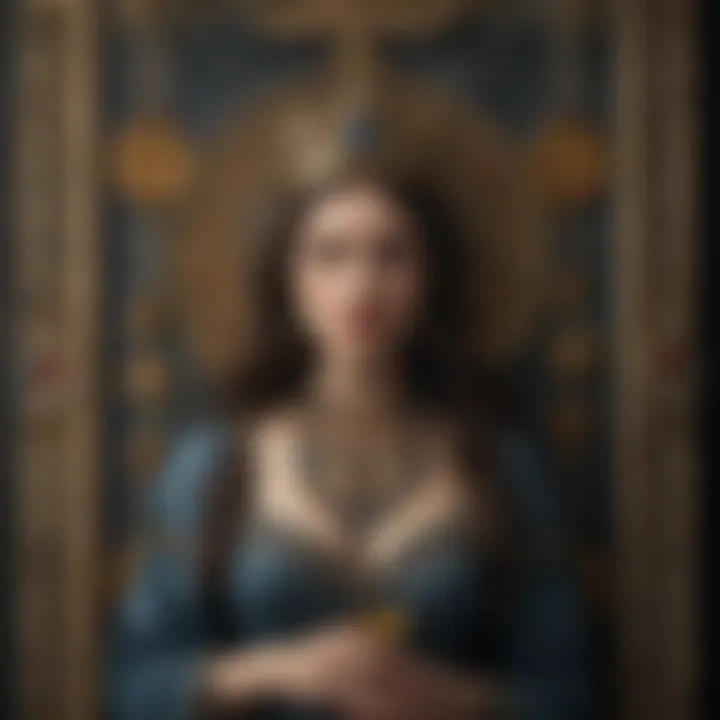
Intro
The world of tarot is a curious blend of art, history, and mysticism, and vintage tarot cards serve as a striking reflection of this intricate tapestry. Often steeped in nostalgia, these cards don't merely represent divination tools; they are emblematic of cultural shifts, societal norms, and the artistry of their time. From hand-painted illustrations in the medieval era to graphic interpretations of modernity, vintage tarot decks tell stories that resonate far beyond the confines of their usage.
As we embark on this exploration, it's essential to appreciate the profound journey these cards have undertaken. Understanding their historical context unveils a deeper connection to the practice of tarot reading itself, while the artistic styles highlight the creativity and vision of the artists who dedicated their talents to this craft. Delving into cultural significance allows us to see how these cards act as mirrors, reflecting the values and beliefs of the societies that produced them. The final piece of the puzzle lies in the allure they hold for collectors and readers today. With this framework in mind, let us explore the myriad facets of vintage tarot cards.
Historical Background of Tarot
The historical background of tarot is essential to understanding the significance of vintage tarot cards today. Tarot cards do not exist in a vacuum; they carry centuries of beliefs, practices, and artistry that reflect the cultural contexts in which they were created. Exploring this history sheds light on how tarot evolved and continues to inspire both readers and collectors alike.
Emergence in Europe
In the 15th century, tarot cards found their footing in Europe. Initially, these cards were used more for games, much like modern-day playing cards, rather than divination. Wealthy families of Italy started commissioning elaborate decks as a form of entertainment. Unlike the ordinary, mundane decks, these cards showcased intricate designs and themes, hinting at a deeper significance that would unfold later.
One notable early deck is the Visconti-Sforza, associated with the noble families of Milan. These decks were lavishly illustrated, featuring beautiful imagery that represents various allegorical elements. It’s intriguing how these artistic designs hinted at potential metaphysical interpretations even before the cards took on their future meanings in divination practices. As tarot began to spread across Europe, it adapted, integrating local folklore and philosophies into its artwork.
Evolution through the Ages
With the passage of time, tarot began to morph from a simple card game into a tool for spiritual exploration. This shift mostly happened during the late 18th century when the occult gained prominence in Western culture. Figures like Antoine Court de Gébelin posited that tarot derived from ancient Egyptian wisdom, a claim that would forever shape the mystique surrounding tarot. The Marseille Tarot emerged as a symbol of this mystical transition, influencing many future decks with its bold imagery and symbolism.
As we approach the 19th century, tarot's popularity saw a significant uptick among artists and esotericists alike. Decks such as the Rider-Waite-Smith, published in the early 20th century, incorporated intricate symbolism that was more psychological than the earlier designs. This marked a pivotal change in how cards were interpreted. Each card revealed a wealth of meanings, emphasizing introspection and personal narratives, a notion that resonates strongly with today’s tarot enthusiasts.
Influence of Cultural Movements
Various cultural movements have left their fingerprints on the evolution of tarot, particularly the rise of spiritualism in the 19th century. As people sought spiritual truths amidst societal upheaval, tarot became a vessel for exploration. Notably, the Art Nouveau movement, which emphasized beauty and elegance, inspired many tarot card designs with flowing lines and dreamlike imagery. The Golden Dawn, a magical order, also played a crucial role by infusing esoteric elements, further linking tarot to spiritual practices.
Furthermore, as feminism gained traction, many female artists began reinterpreting tarot through a lens that emphasized empowerment and inclusivity. Decks such as The Motherpeace Tarot, created in the 1980s, reflect these changes, highlighting strong, independent women and diverse narratives that diverged significantly from traditional representations.
"Each card is not merely a picture; it’s a window into the beliefs and values of the time that created it."
Understanding the historical background of tarot illuminates why vintage tarot cards are more than mere collectibles. They embody a rich tapestry of human experience, artistry, and philosophy that continues to resonate today. As we dive deeper into the intricate artistry and cultural significance of these decks, recognizing their origins sets the stage for appreciating their ongoing allure.
Defining Vintage Tarot Cards
In understanding vintage tarot cards, it’s crucial to grasp how they embody more than just a tool for divination—they hold layers of history, artistry, and cultural narrative. Vintage tarot cards generally refer to decks created before the 20th century, or at least, those designed with a style and intention that distinguishes them from contemporary ones. For many collectors, these cards represent a tangible link to the past and invite a deeper exploration of the esoteric traditions that flourished around them. Here, we navigate the characteristics that define these sought-after collectibles along with key decks and their significance in the larger context of tarot reading.
Characteristics of Vintage Decks
When discussing the characteristics of vintage tarot decks, a few elements stand out as undeniably important:
- Artistic Design: Vintage decks often showcase unique art styles reflective of their time. Think ornate illustrations, detailed color palettes, and sometimes even an infusion of local cultural imagery. A great example would be the Visconti-Sforza tarot, which dates back to the 15th century and is celebrated for its richly painted cards.
- Material and Technique: The materials and methods employed in making early tarot cards vary widely. Many vintage decks were hand-painted or woodblock printed, which can result in a striking tactile experience. This contrasts with today’s mass-produced options.
- Symbolism and Themes: Unlike the more streamlined meanings found in modern decks, vintage cards often delve into complex symbolism, rich in references to mythology, astrology, and historical narratives. Each image tells a story, inviting deeper contemplation.
These characteristics underscore the relational context between the deck and its user, highlighting an integral bond that modern cards often lack. An astute collector recognizes this when selecting decks, looking beyond just aesthetic appeal.
Key Decks and Their Significance
Certain decks have earned a rightful place in the annals of tarot history due to their unique artistry or cultural relevance. Here are a few notable examples:
- The Marseille Tarot: Emerging in France during the late 17th century, the Marseille Tarot serves as a foundational template for many modern decks. It gained immense popularity due to its straightforward yet profound art style, making it a favored choice for learning traditional tarot meanings.
- The Rider-Waite-Smith Deck: Released in 1910, this deck is renowned not only for its beautiful illustrations but also for its role in shaping modern tarot symbolism. Designed by Pamela Colman Smith under the guidance of Arthur Edward Waite, its imagery has influenced countless subsequent decks.
- The Thoth Tarot: Crafted by Aleister Crowley and painted by Lady Frieda Harris in the early 20th century, the Thoth Tarot interweaves deep esoteric and mystical themes. Its vibrant artwork and complex symbolism have appealed to both collectors and practitioners alike.
"Each vintage tarot card is like a time capsule, preserving the beliefs, artistry, and wisdom of its era."
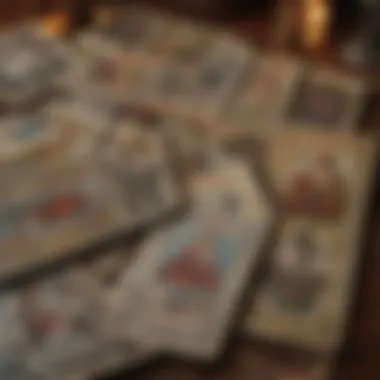
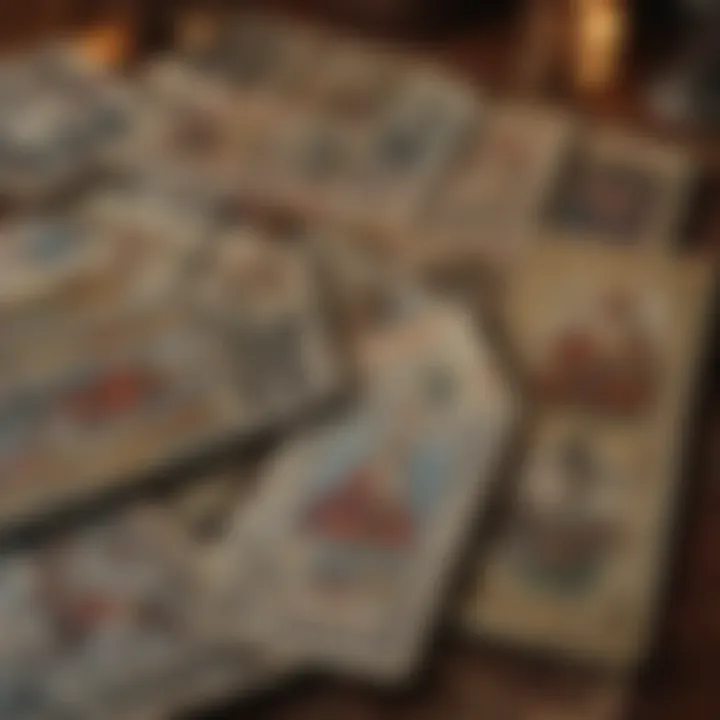
Collectively, these decks illustrate the evolving language of tarot through the ages, informing both practice and study for enthusiasts today. Understanding these key developments enhances not only collecting strategies but also enriches the reading experience, allowing users to connect historically and emotionally with the cards.
Artistry in Vintage Tarot Decks
The artistry in vintage tarot decks encapsulates a rich history brimming with creativity and spiritual exploration. Each card serves not only as a tool for divination but also as a canvas reflecting the artistic styles and societal trends of its time. Understanding the artistry behind these decks offers valuable insights for collectors and practitioners seeking deeper meanings in their readings.
Artistic Styles and Techniques
In the realm of vintage tarot, artistic styles can vastly differ from one deck to another, showcasing unique techniques influenced by the artists’ backgrounds and the time periods in which they created. For instance, the Rider-Waite-Smith deck, conceived in the early 20th century, is renowned for its detailed illustrations and use of vibrant colors. This deck's symbolism was primarily influenced by the Art Nouveau movement, which celebrated nature and fluid lines.
Conversely, earlier decks like the Visconti-Sforza Tarot from the 15th century exhibit a more restrained and regal aesthetic, concentrating on ornate arrangements rather than bold expression. The artistry also varies through the use of materials—some decks were painted on cloth, while others utilized woodcut techniques or were crafted from gilded paper, affecting both the tactile experience and the visual allure.
Overall, each style tells a story, reflecting not just the artist's skill but also the historical and cultural milieu in which they operated.
Iconography and Symbolism
When it comes to tarot cards, every symbol holds profound meaning. The iconography in vintage decks is deeply layered, with images that often reference mythology, religion, and astrology. For example, take the Thoth Tarot, designed by Aleister Crowley—its imagery draws heavily on Kabbalistic teachings and Egyptian mythology. The intricate symbols act as a bridge, guiding the reader from mundane experience to spiritual insight.
Symbols are vital in the tarot reading process; they evoke emotions, memories, or ideas, enabling the reader to engage with the cards at a deeper level. Each representation, from the familiar fool to the complex tower, resonates with unique interpretations shaped by viewers' perspectives and experiences. Collectively, these elements create a rich tapestry of meanings that practitioners must navigate, underscoring the artistry's complexity and depth.
Comparison with Modern Decks
Comparing vintage tarot decks with contemporary designs reveals distinct shifts in artistic expression and cultural context. Recent decks often embrace varied aesthetics, ranging from minimalist to highly abstract styles. For example, the Modern Witch Tarot engages with themes of empowerment and inclusiveness, striving to mirror a diverse modern society. The imagery is often more relatable to the contemporary audience, yet it may not hold the same historical gravitas as its vintage predecessors.
In vintage decks, there's often a fusion of cultural ideologies and artistic traditions that speak volumes about past societies. The differences are not merely aesthetic; they also reflect evolving attitudes toward the symbols and narratives within tarot. Collectors often find themselves navigating this split—between the historical significance of vintage cards and the innovative artistry of modern decks—each offering unique benefits and considerations depending on one’s intentions.
The beauty of vintage tarot cards resides not just in their artistry but in their ability to connect us to a rich historical narrative and diverse cultural perspectives.
"The art of tarot is like a mirror; it reflects back our fears, desires, and aspirations, set against the vast canvas of history."
Through understanding these artistic elements, each card can serve as a guide, unlocking the layered meanings and the personal interpretations that resonate deeply with its reader.
Societal Impact on Tarot Designs
Understanding the societal impact on tarot designs is essential to grasping the evolution of these intriguing tools of divination. Tarot cards have not only served as instruments for personal insight but have also been reflections of the cultural, social, and political climates of their times. Each deck is a unique artifact that embodies the attitudes, values, and concerns of the period in which it was created. The influence exerted by various social movements and shifts in public perception has transformed tarot into a canvas expressing collective identities and aspirations.
Changes Through the Decades
The years have brought significant changes to tarot card designs, with each decade seemingly telling its own story:
- 1900s to 1920s: This era saw tarot becoming mainstream, particularly with the publication of the Rider-Waite deck in 1909. Artists were exploring symbolism in depth, and there was a resurgence of interest in mysticism following the late 19th-century occult revival.
- 1930s to 1950s: The Great Depression and two World Wars influenced designs as the focus shifted towards themes of survival and morality. Decks reflected simpler artistic styles—more practicality than depth, perhaps mirroring the struggles of the time.
- 1960s to 1980s: As society embraced counter-culture movements and feminism, tarot decks began to reflect evolving gender roles and spiritual awakenings. This time also ushered in a passion for more diverse artistic interpretations.
- 1990s to Present: We see a melting pot of styles, integrating modern art techniques, digital aesthetics, and global cultural references. The emergence of the internet has allowed countless artists to share their interpretations, leading to a surge in independent decks that challenge traditional imagery.
These trends highlight how tarot designs do not exist in isolation; instead, they serve as mirrors to the shifts and currents of societal sentiments.
Tarot and Gender Roles
A noteworthy societal discourse surrounding tarot has been its portrayal of gender roles. Early decks often reflected the patriarchal norms of their time. However, as feminist movements gained momentum, so too did the representation of strong female archetypes within tarot. For instance, the archetypes of the High Priestess and the Empress began to embody more empowered traits.
In contemporary decks, you can witness a broader exploration of gender expressions. Artists have started to create inclusive representations that transcend traditional binaries. The emergence of androgynous figures and diverse representations signifies a break from conventional portrayals, welcoming tarot readers from different backgrounds and identities.
Tarot in Pop Culture
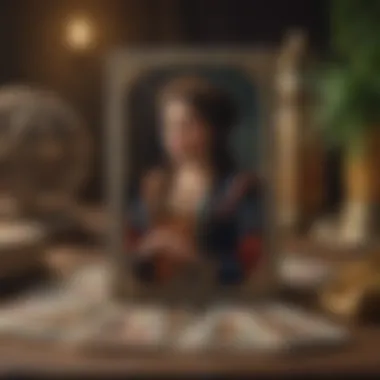
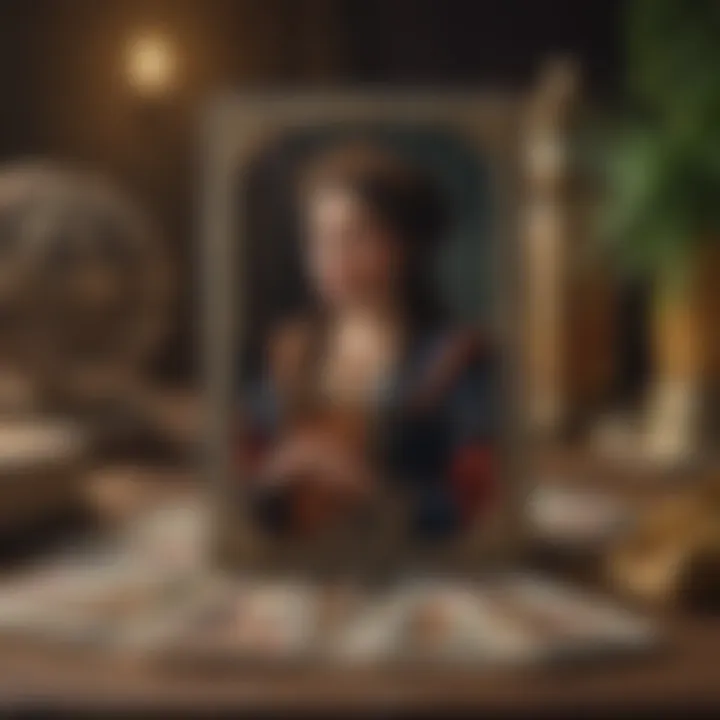
The influence of tarot in popular culture cannot be understated. Tarot cards have leaped beyond the niche of occult practices and entered mainstream entertainment. From movies to television shows, references to tarot have become more frequent and varied.
- Film and Television: Tarot cards often serve as visual metaphors in films. For example, in The Craft, the tarot becomes a conduit for the characters' powers. Shows like American Horror Story use tarot imagery to enhance themes of fate and foreboding.
- Literature and Music: Authors and musicians alike have incorporated tarot themes into their works. Whether it be a song that speaks of the Fool’s journey or a novel that uses cards to outline character arcs, these cultural artifacts highlight the tarot's versatility and deep symbolism.
In this way, tarot cards not only reflect societal dynamics but also influence them, creating dialogues about belief systems and personal agency.
"Tarot cards are not merely tools for fortune-telling but rather, they become the threads that weave together the tapestry of personal and collective experiences, reflecting the essence of our shared human journey."
Collecting Vintage Tarot Cards
Collecting vintage tarot cards is not merely a hobby; it's a journey through history, culture, and art. For those who feel a connection to the mystical and the esoteric, these decks often serve as more than just tools for divination. They encapsulate stories and artistic expressions from different eras and social landscapes. The appeal of vintage tarot cards is multifaceted, intertwining aesthetics, nostalgia, and spirituality.
Every deck tells a tale, each card a snapshot of the time it was created. Enthusiasts often find themselves in a search for authenticity, valuing the stories behind the artwork and the creators who poured their visions into these cards. Collecting vintage decks can deepen one's understanding of tarot's evolution and its impact on communities.
Why Collect Vintage Decks?
Collecting vintage tarot decks offers several rewards. For starters, many collectors find that older decks often possess a unique charm that modern decks sometimes lack. The hand-drawn artistry, aged textures, and even the patina of wear tell a story that resonates personally with many. Moreover, vintage decks can serve as a valuable resource for practicing tarologists, offering insights into the diverse interpretations of symbols from various periods.
These decks not only hold aesthetic value but can be a great investment. The tarot card market has seen significant interest, and rare vintage decks could fetch impressive prices. Understanding why certain decks become sought-after can enhance one's perspective on tarot and its shifting cultural significance.
Finding Authentic Decks
Hunting for authentic vintage tarot decks requires a thin balance of knowledge and intuition. Authenticity is paramount; the last thing any collector wants is to invest in a reproduction deck, especially when the allure of the vintage lies in its history. Popular platforms for finding these treasures include online marketplaces like eBay, Etsy, and specialized forums on Reddit dedicated to tarot enthusiasts. Occasionally, local garage sales or estate sales yield hidden gems, but one must be ready to sift through boxes of unwanted trinkets.
When exploring online platforms, look for detailed descriptions and photographs. If possible, ascertain feedback from sellers. Joining communities on sites like Facebook can also lead to reputable sources or recommendations from fellow collectors.
Evaluating Condition and Value
Before making a purchase, assessing the condition of a tarot deck is crucial. Collectors typically look at factors such as:
- Card Quality: Check for any creases, stains, or fading.
- Completeness: Ensure all cards are included; a missing card can significantly reduce value.
- Box Condition: The original packaging enhances a deck's worth, especially if it includes additional materials or unique artwork.
To gauge value, start by researching similar decks that have recently sold. Various online resources track sales trends for vintage tarot cards; websites like Britannica might provide broader insights into the card's history, helping to determine its worth. Knowledge is power in the world of collecting, and understanding the nuances of what influences a deck's value will serve you well.
"A vintage tarot deck is like a time capsule; each card whispers stories of an era gone by, waiting to be rediscovered."
Navigating the intricacies of collecting vintage tarot cards can yield a rewarding experience, enriching both personal spirituality and understanding of tarot's rich tapestry.
Preservation and Care of Vintage Tarot Cards
The importance of preserving vintage tarot cards cannot be overstated. These cards are not merely tools for divination; they are pieces of history and culture. Protecting and caring for these artifacts ensures that they can be appreciated for generations to come. When collectors and enthusiasts engage with vintage tarot cards, they’re connecting with the past, which makes the preservation of these cards a worthy endeavor. Proper care not only enhances their longevity but also maintains their value in the collectors' market.
Proper Handling Techniques
Handling vintage tarot cards with care is crucial for maintaining their condition. Here are some effective techniques:
- Clean Hands: Always ensure that hands are clean and dry before touching the cards. Oils and dirt can accumulate quickly, leading to deterioration over time.
- Gentle Touch: When shuffling or handling the cards, do so gently. Rigorous shuffling can cause edges to wear and may damage the printed surface.
- Minimize Handling: Limiting the number of times cards are handled can diminish the risk of wear. Using spreads or layouts can help keep the interaction minimal.
A simple pull from a deck with minimal movement can go a long way in keeping the cards in prime condition. Remember, the goal is to enjoy the process without sacrificing the artifact's integrity.
Storage Solutions
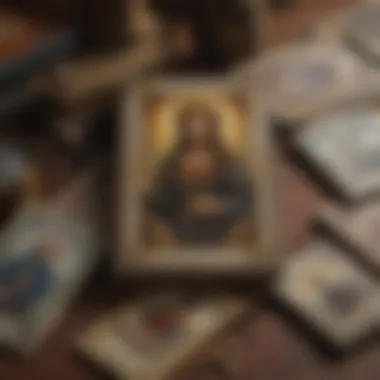
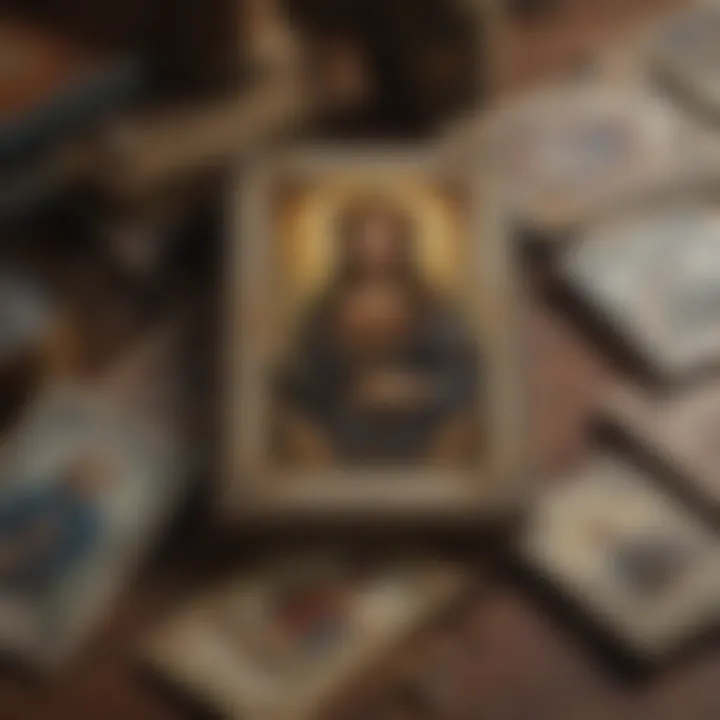
Where and how vintage tarot cards are stored greatly impacts their preservation. Here are some recommended storage solutions:
- Use Soft Sleeves: Individual soft sleeves or archival-quality bags can protect cards from scratches and dust. Consider using polyester or mylar options to avoid chemicals that can harm the cards.
- Avoid Direct Sunlight: Store the cards in a cool, dry place, away from sunlight. Prolonged exposure can lead to fading and warping.
- Use a Sturdy Box: A dedicated box, preferably acid-free, offers protection from physical damage. Ensure that the box is not overcrowded to prevent bending or crushing.
- Humidity Control: If you live in a humid area, consider using silica gel or dehumidifiers in storage spaces to prevent mold and mildew from forming.
Proper storage is like putting your vintage cards in a time capsule, providing a strong defense against degradation and environmental factors.
Restoration vs. Replacement
When faced with damaged vintage tarot cards, the question arises: should they be restored or replaced? Each option has its pros and cons:
- Restoration: This involves repairing the card to restore its appearance and functionality. However, restoration should be conducted by a professional to ensure authenticity is preserved. Common methods include re-gluing seams and minor coloring repairs, aiming to maintain the original art integrity.
- Replacement: In cases where the damage is extensive, replacing the card may be necessary. This is particularly true for modern reproductions or decks that are easily accessible in the market. Replacement can be a practical choice, but it sometimes hampers the historical value associated with the original cards.
In summary, weighing the sentimental value against the practical considerations is essential when deciding on the path of restoration versus replacement.
"Caring for these artifacts is not just a responsibility; it’s a connection to the layers of meaning they’ve held over time."
By adopting sound preservation practices, enthusiasts affirm their commitment not only to their collection but also to the cultural tapestry that vintage tarot cards represent. This way, the legacy continues, lively and relevant, within both the tarot community and the wider world.
Contemporary Relevance of Vintage Tarot
In today’s fast-paced and ever-evolving world, vintage tarot cards have emerged not only as nostalgic artifacts but also as vital instruments within the realm of tarot reading. Their contemporary relevance extends beyond merely being collectibles; they serve as bridges connecting practitioners to the rich tapestry of spiritual history, personal introspection, and community engagement. Acknowledging their significance aids in understanding how these decks function in modern practice and their enhanced value among both seasoned astrologers and curious newcomers alike.
Integration in Modern Readings
As tarot gains traction in alternative spirituality circles, the integration of vintage tarot into readings presents unique opportunities. Practitioners often find that these older decks, with their intricate artistry and storied pasts, give a different flavor to readings compared to contemporary sets. Each card tells a story, not just of the future but of its historical context, adding layers to interpretations.
Using a vintage tarot deck can lead to a deeper level of connection for both the reader and the querent. Here are a few notable ways vintage tarot decks are incorporated into modern readings:
- Historical Insights: Many decks parallel societal norms of their time, influencing how cards are read. For instance, the imagery in a pre-WWI deck might reflect the gender roles of that era, which could prompt conversations about how those themes persist today.
- Intuitive Responses: Vintage decks often evoke intuitive responses. The unique artistic styles can lead to interpretations that are more personal and less formulaic than in sleek, commercial decks.
- Enhancing Ritual: Incorporating a revered vintage deck can elevate the entire experience of a reading session, transforming it into a ritual that honors not just present concerns, but also the wisdom of those who have come before.
"The vintage tarot deck transforms readings into more than just fortune-telling; it feeds a dialogue with history itself."
Community and Online Knowledge Sharing
With the rise of the internet, tarot communities have flourished, creating rich spaces for knowledge sharing and collaboration. Vintage tarot cards inspire passionate discussions among enthusiasts who explore the nuances of these artful decks.
- Forums and Social Media: Platforms like Reddit and Facebook foster spaces where collectors and practitioners exchange insights, share images of their find, and launch conversations about particular themes or imagery unique to vintage cards.
- Online Workshops and Courses: An increasing number of practitioners are offering online sessions focusing on vintage tarot, emphasizing their interpretation, historical context, and unique spread techniques, catering to both beginners and experienced tarologists looking to deepen their understanding.
- Blogs and Publications: Various websites now house articles dedicated to vintage tarot. These resources often provide analyses of specific decks, reviews on collectors’ items, and tips on integrating these treasures into daily practice.
As vintage tarot continues to weave itself into modern spiritual lives, the sense of community around these practices enhances their relevance. The exchange of knowledge, personal experiences, and historical narratives surrounding vintage tarot cards not only enriches one’s tarot journey but also solidifies their role in the cultural landscape of contemporary spirituality.
Closure: The Enduring Legacy of Vintage Tarot Cards
The realm of vintage tarot cards is not merely a collection of aged paper or ancient artistry; it embodies a rich narrative that intertwines with cultural evolution, personal exploration, and spiritual inquiry. As we reach the culmination of our exploration, it’s vital to recognize the profound significance these decks hold in today’s world. Their enduring legacy is evident not just in their beauty, but also in the stories they tell about our societal values, beliefs, and collective consciousness.
Reflecting on Their Cultural Journey
When we look back at the history of vintage tarot, it's evident that each deck reflects the cultural zeitgeist of its time. From the lavish illustrations of the Visconti cards in the 15th century to the mystical vibes of the Rider-Waite-Smith deck, each design and symbol carries the weight of its context. These cards were not simply tools for divination but also mirrors of the human experience, portraying themes of love, war, mythology, and spirituality.
As the world changed, so too did the tarot decks, evolving to reflect new ideas and social movements. For example, the feminist movements of the 1970s inspired decks that incorporated empowering imagery and narratives surrounding strong female figures and archetypes. This adaptability highlights tarot’s ability to resonate across generations, making it a living art form that continues to grow and transform.
"Tarot acts as a bridge — connecting our past, present, and potential futures, illustrating how the tapestry of culture shapes individual journeys."
The Future of Vintage Tarot Collecting
Looking forward, the landscape of vintage tarot collecting appears vibrant and full of possibilities. As interest in personal spirituality and alternative practices grows, collectors and readers are finding themselves increasingly drawn to the tactile connections offered by these classic decks. Vintage tarot isn't just about owning a piece of history; it’s about creating a dialogue between the past and present, where the wisdom of ancient symbols informs contemporary practices.
With the rise of online platforms, collectors now have unprecedented access to authentic vintage decks from around the globe. Online marketplaces and community forums on platforms like reddit.com and facebook.com allow enthusiasts to share insights, evaluate the condition and history of decks, and even discuss their unique reading styles. This not only fosters a dynamic community of like-minded individuals but also encourages new collectors to find their niche within the broad spectrum of available decks.
As digital tools proliferate, enthusiasts must balance them with traditional practices. While apps replicate card reading, they lack the tangible essence that vintage cards provide. Collectors and readers alike should remain vigilant in preserving the authenticity of the experience, ensuring the art of tarot remains grounded in its rich heritage.


